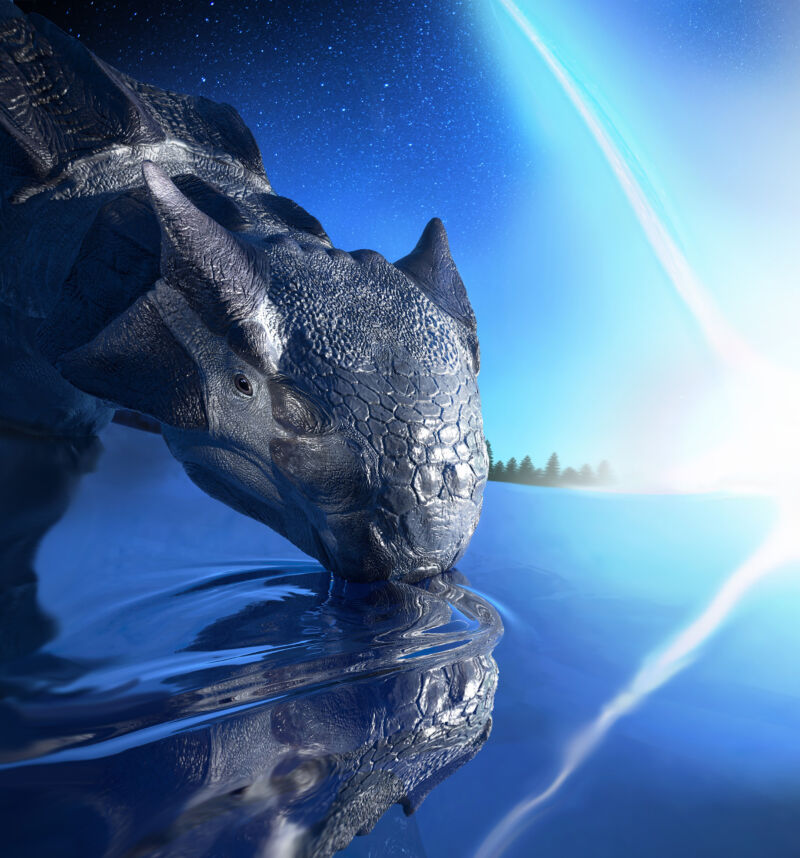Did huge eruptions actually help during the end-Cretaceous extinction?

Enlarge / Artist's depiction of Ankylosaurus magniventris having a bad day. (credit: Fabio Manucci)
The mass extinction event that ended the Cretaceous period 66 million years ago has long generated a lively back-and-forth debate among geologists. Wild episodes of volcanism line up with earlier mass extinctions, and the end-Cretaceous saw the Deccan Traps eruptions, which covered much of what is now India in lava. The asteroid impact that formed the Chicxulub crater quite obviously goes in the bad things for life" category, too. But the Deccan eruptions can't be ignored, so debates on the relative contributions of these events have been unavoidable.
In the last few years, more precise dating techniques have made the timing of the eruptions clearer. It's obvious where the asteroid impact fits into the timeline, as a layer of dust and soot appears in the rocks around the world, but tying in the eruptions has been more difficult. And the fossil evidence and climate indicators have also left some room for interpretation about the effects of the volcanism.
A new study led by Alessandro Chiarenza at Imperial College London and Alexander Farnsworth at the University of Bristol tries to get some answers through a slightly different approach-creating a dinosaur habitat model.
Read 12 remaining paragraphs | Comments